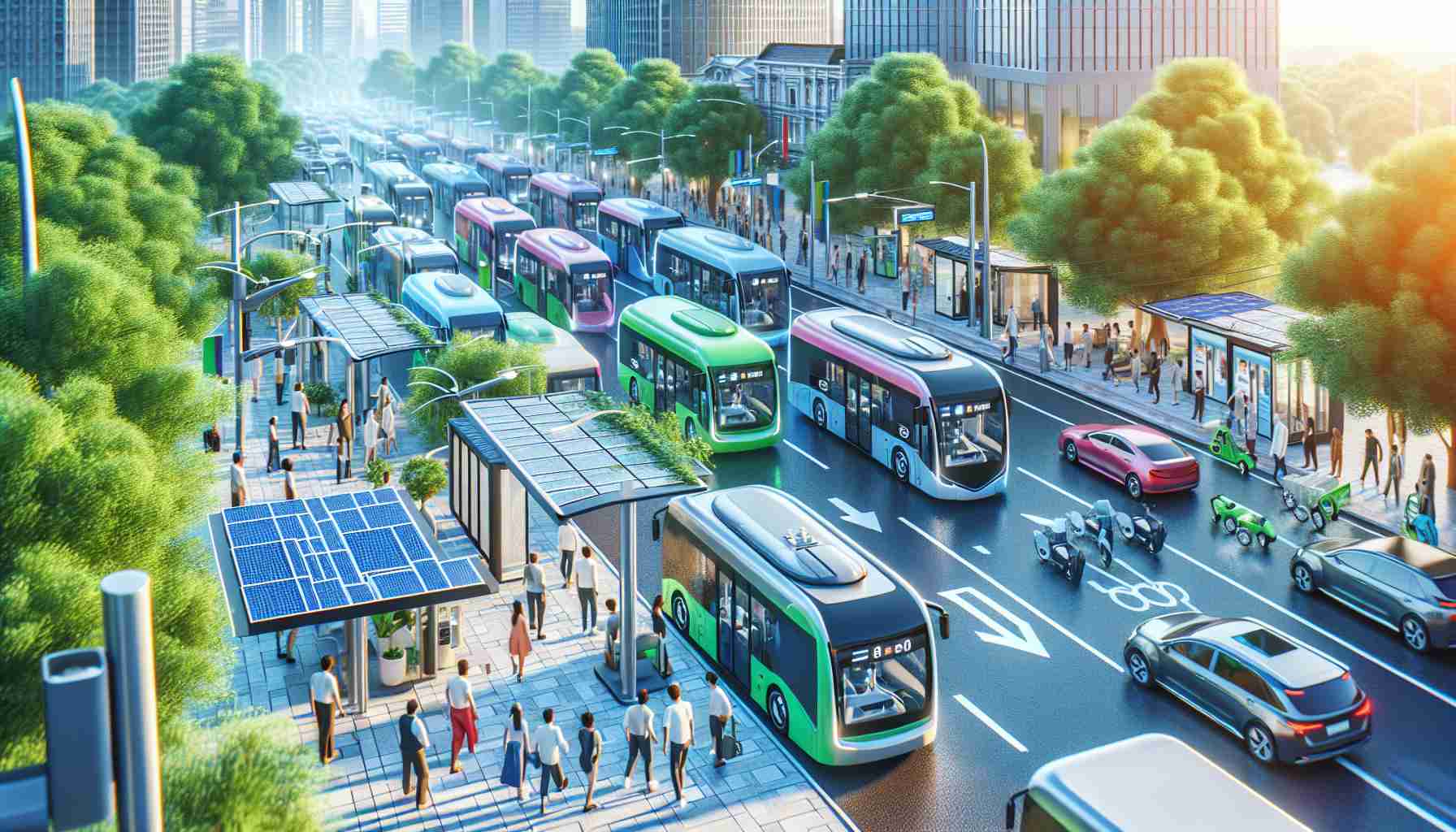- The electric bus market is advancing rapidly, driven by breakthroughs in battery technology and government support.
- Advancements in solid-state batteries enhance energy density, reduce costs, and extend the range of electric buses, making them more appealing to transit authorities.
- Global governments are promoting electric bus adoption through subsidies, investment in charging infrastructure, and stringent emission standards.
- Significant investment in charging infrastructure, including fast-charging, wireless, and pantograph solutions, addresses key adoption challenges.
- Regions like Asia-Pacific, led by China and India, are at the forefront of electric bus adoption, with Europe and North America also making strides.
- Companies such as BYD and Proterra are key players in delivering innovative, zero-emission buses globally.
- The shift towards electric buses signals a move towards sustainable urban transportation, promising cleaner and quieter cities.
The global electric bus market surges forward with an impressive vigor, powered by leaps in battery technology and strategic government backing. Once an outlier, the electric bus now promises to redefine urban mobility and shrink our carbon footprint.
Imagine a world where city streets hum instead of roar. Recent innovations in battery tech have made electric buses not only more efficient but also more compelling to transit authorities. With advancements like solid-state batteries improving energy density and reducing costs, these buses now offer extended ranges and lower maintenance needs, seamlessly integrating into our daily commutes.
Governments worldwide are fully charged in their efforts to push electric buses into the mainstream. Through enticing subsidies, substantial investments in charging infrastructure, and rigorous emission standards, they are rapidly transforming public transport. The ripple effects are visible, with cities accelerating their transition towards zero-emission fleets. India’s ambitious FAME II scheme exemplifies this movement, incentivizing the addition of electric buses to urban fleets.
A robust charging infrastructure stands crucial to this electrifying shift, addressing a critical barrier to adoption. Fast-charging stations are sprouting up, and innovations like wireless and pantograph charging are tackling the issue of downtime.
Globally, the charge is led by regions such as Asia-Pacific, where China and India spearhead the transformation. Europe and North America follow close behind, propelled by policy and innovation alike. This rapid growth is mirrored by players like BYD and Proterra, determined to bring cutting-edge, zero-emission solutions to streets worldwide.
In essence, the electric bus embodies a beacon of hope towards sustainable urban landscapes. As technological advancements continue to merge with policy support, these buses will soon be driving the world towards a cleaner, quieter future.
Electric Buses: The Silent Revolution Transforming Urban Mobility
Market Forecasts & Industry Trends
The electric bus market is experiencing significant growth, with various reports suggesting that it could reach unprecedented levels in the coming years. According to a report by Allied Market Research, the global electric bus market is projected to reach $84 billion by 2027, growing at a CAGR of 27.2% from 2020 to 2027. This expansion is primarily driven by developments in battery technology and increased government support for green transportation.
Real-World Use Cases
Cities worldwide are quickly adapting to electric buses due to their environmental benefits and lower operational costs. For instance, Shenzhen, China, converted its entire public bus fleet to electric, which significantly improved air quality and reduced the city’s carbon emissions. In Europe, London is deploying electric double-decker buses to meet its ambitious emissions targets and improve urban air quality.
Battery Technology Advancements
Recent breakthroughs in battery technology, particularly with solid-state batteries, have been pivotal in making electric buses more viable. Solid-state batteries offer higher energy density, faster charging times, and increased safety compared to traditional lithium-ion batteries. These advancements result in significantly extended ranges for electric buses, reducing the frequency and duration of charging stops, thus enhancing operational efficiency.
Government Initiatives and Support
Government incentives play a crucial role in the adoption of electric buses. For example, India’s FAME II scheme provides subsidies to promote the use of electric vehicles in urban transport, aiming to add 7,090 electric buses to the country’s fleet by 2022. Similarly, in Europe, the EU’s Green Deal aims to reduce net greenhouse gas emissions by at least 55% by 2030, bolstering investments in electric transportation infrastructure.
Charging Infrastructure Developments
The emergence of advanced charging infrastructure is vital for the widespread adoption of electric buses. Fast-charging stations and innovative technologies like wireless charging and pantograph systems reduce downtime and improve vehicle turnaround times. These solutions are especially effective in urban environments with high passenger demand and limited idle time.
Pros & Cons Overview
Pros:
– Environmental Benefits: Electric buses produce no tailpipe emissions, contributing to cleaner air in urban areas.
– Reduced Operating Costs: Lower fuel and maintenance costs due to fewer moving parts compared to combustion engines.
– Noise Reduction: Electric buses offer quieter operation, enhancing urban environments.
Cons:
– High Initial Costs: The purchase price of electric buses is generally higher than diesel buses, although subsidies and long-term savings can mitigate this.
– Range Limitations: Despite technological advancements, range anxiety remains a concern, particularly in regions with less developed infrastructure.
– Infrastructure Needs: Widespread adoption requires significant investment in charging and maintenance facilities.
Actionable Recommendations
– Cities and transit authorities should leverage governmental subsidies: to offset the higher initial costs of electric buses, considering long-term savings on operation and maintenance.
– Invest in robust infrastructure: Fast-charging and wireless systems can make electric fleets more practical, minimizing downtime and ensuring high service levels.
– Adopt pilot programs: to evaluate the performance of electric buses under local conditions before full-scale deployment.
Keywords
Electric Bus Market, Battery Technology, Government Support, Zero-Emission Vehicles, Urban Mobility, Charging Infrastructure, Sustainable Transportation.
For more information and updates on the electric bus industry, visit Proterra or BYD.
